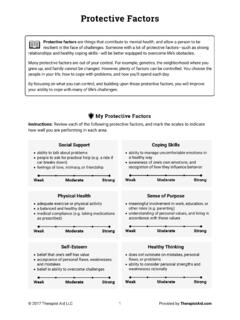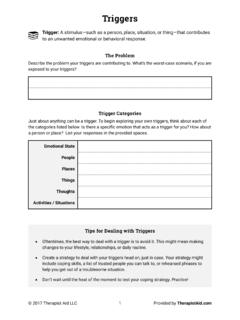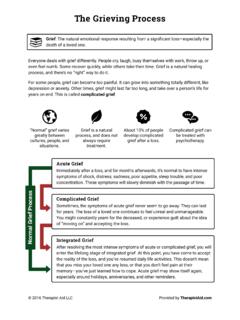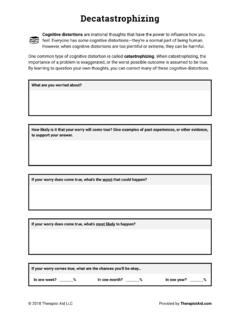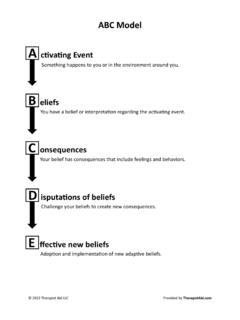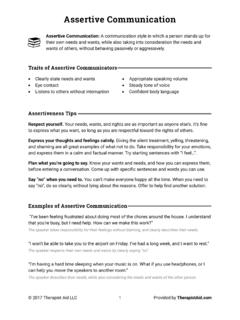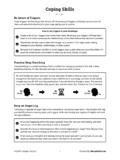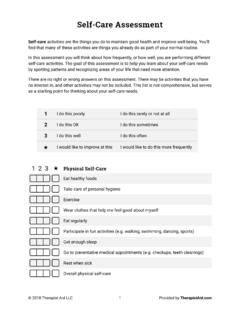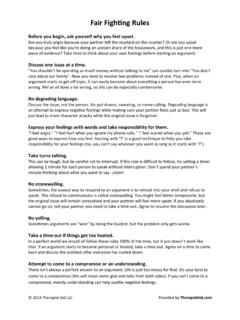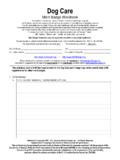Transcription of What are Panic Attacks? - Therapist Aid
1 what are Panic attacks ? 2015 Therapist Aid LLC Provided by Panic attacks are brief periods of overwhelming fear or anxiety. The intensity of a Panic attack goes well beyond normal anxiety, and can include a number of physical symptoms. During Panic attacks , people often fear that they are having a heart attack, they cannot breathe, or they are dying. Symptoms of a Panic Attack Note: A Panic attack does not need to include all of the symptoms listed below. Pounding or racing heart Sweating Trembling or shaking Fear of going crazy Feeling of being detached from reality Breathing difficulties Sense of terror, or impending doom or death Chest pain or discomfort Nausea Fear of dying Panic Attack Facts Panic attacks may feel scary, but they don t actually cause physical harm.
2 The most common fears associated with Panic attacks (having a heart attack or fainting) are not actually a threat. Panic attacks are usually brief but intense. The symptoms of Panic typically peak within 10 minutes, and end within 30 minutes. However, some lingering symptoms can last over an hour. Panic attacks can seem to occur randomly, or they can be closely linked to a specific source of anxiety such as driving, crowded places, or simply leaving home. Panic disorder occurs when a person has frequent worry or fear of future Panic attacks , or when they change their behavior in order to avoid attacks (such as avoiding a feared situation). How are Panic attacks Treated? Cognitive Behavioral Therapy Cognitive behavioral therapy (CBT) is a common and well-supported treatment for Panic attacks and Panic disorder.
3 CBT works by identifying and changing unhealthy thinking patterns that trigger Panic attacks . The benefits of CBT can be long-lasting. Exposure Therapy During exposure therapy, the patient is intentionally exposed to the symptoms of Panic in a safe environment. As exposure continues, the symptoms become more familiar and less terrifying. Exposure therapy may also involve gradual exposure to feared situations. Medication Medication for Panic attacks can act as a short-term treatment for severe cases. Because medication does not treat the underlying issues that cause Panic disorders, it should be accompanied by another form of treatment such as psychotherapy. Relaxation Techniques Much like how muscles become stronger with exercise, the body s relaxation response can be improved with practice.
4 Frequent use of relaxation techniques such as deep breathing, meditation, and progressive muscle relaxation can help to combat Panic attacks .
